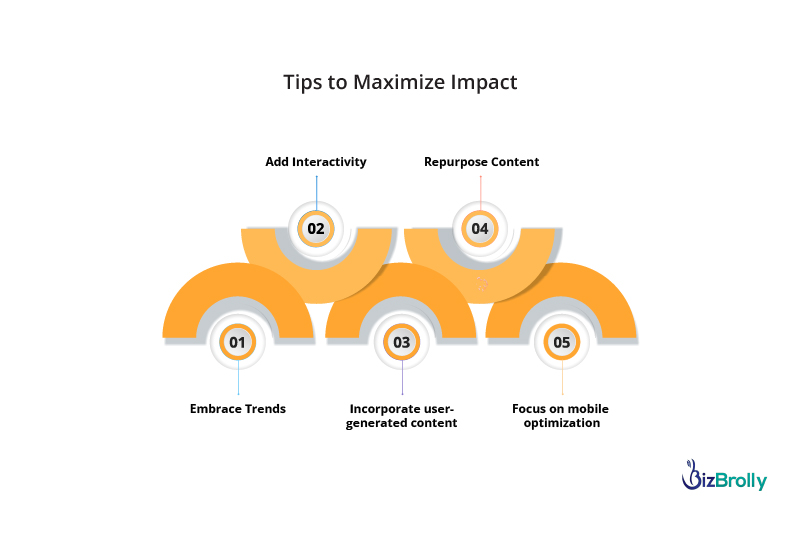Best Tips For Video Marketing That You Must Know


One of the most effective methods for drawing in customers, spreading messages, and fostering brand loyalty in the fast-paced digital world of today is video marketing. Video content has an unmatched ability to captivate audiences and produce results, regardless of whether you’re a small business owner or a marketing expert. According to studies, video content improves audience comprehension of a product by 95%, and companies who employ video marketing see a 49% boost in income compared to those that don’t.
From compelling storytelling to strategic promotion, video marketing provides endless opportunities to connect with your audience on a deeper level. Platforms like YouTube, TikTok, and Instagram have made it easier than ever to share video content and reach global audiences. But with so much competition, creating effective video campaigns requires planning, creativity, and technical know-how.
Among the digital marketing methods, video marketing has grown to be one of the most effective. By 2025, 82% of all consumer internet traffic is expected to consist of video content, so it’s no surprise that companies in a variety of sectors are using this platform to engage audiences, build brand awareness, and boost conversions. Videos are a unique approach to communicate tales, show off products, and emotionally connect with viewers. They are also entertaining and adaptable.
A well-executed video marketing strategy can elevate your brand and differentiate it in a crowded digital landscape. Whether you’re a seasoned marketer or just starting your journey, knowing the best practices for video marketing is essential for achieving success. In this blog, we’ll explore actionable tips and proven strategies to help you create compelling videos, maximize your reach, and ensure your campaigns deliver measurable results.
Before diving into the tips, let’s look at a few compelling statistics:

These numbers reveal why video marketing has become a non-negotiable part of successful marketing strategies. Videos captivate, inform, and engage audiences far more effectively than text or static visuals. By combining storytelling with visuals and sound, videos create an emotional connection that resonates with viewers, helping them understand your message and building trust in your brand.
Beyond emotional engagement, video content also delivers measurable results. Businesses that use video see increased conversions, better audience retention, and higher brand recall. For example, an explainer video can simplify complex ideas, while a product demo can showcase the value of your offering in a visually compelling way.
Moreover, video content boosts visibility online. Search engines like Google prioritize websites with video, making it 53 times more likely for a video-optimized site to rank on the first page of search results. Video also performs exceptionally well on social media platforms, where algorithms favor video content, ensuring it reaches more users.
Clearly, video marketing isn’t just a trend, it’s a must-have for businesses of all sizes. Let’s explore how you can make the most of it.

The first step to successful video marketing is setting clear, measurable goals. Determine what you want to achieve, whether it’s increasing brand awareness, driving website traffic, generating leads, or boosting sales. For instance:
Understanding your audience is crucial for creating content that resonates. Conduct research to learn about their preferences, pain points, and the platforms they frequent. For example, Gen Z prefers platforms like TikTok and Instagram, while millennials and professionals lean towards YouTube and LinkedIn.
Video production doesn’t have to break the bank, but quality matters. Allocate your budget wisely, balancing between professional production for key campaigns and cost-effective options like user-generated content.
Each platform has its strengths and audience. Use YouTube for long-form content, Instagram and TikTok for short, engaging clips, and LinkedIn for B2B storytelling.
Consistency is key. Create a calendar that outlines your video topics, publishing dates, and promotion strategies. For example, plan to release a product demo video a week before your launch, followed by testimonials post-launch.
Great stories evoke emotions and keep viewers engaged. Instead of merely showcasing your product, tell a story about how it solves a real problem. For instance, Dove’s “Real Beauty” campaign is a masterclass in storytelling that connects with audiences on a deeper level.
Attention spans are shrinking. HubSpot reports that videos under two minutes long get the most engagement. Ensure your content is concise and delivers value quickly.
Editing can make or break your video. Use professional tools or hire experts to ensure smooth transitions, clean audio, and appealing visuals.
Incorporate your logo, brand colors, and fonts to make your videos instantly recognizable. A consistent visual style builds brand identity over time.
85% of Facebook videos are watched without sound. Adding captions ensures your message reaches all viewers, including those who are hearing impaired or watching in silent mode.
Conduct keyword research to identify terms your audience is searching for. Include these keywords in your video title, description, and tags to improve discoverability.
Your video’s thumbnail is often the first thing viewers notice. Design custom thumbnails that are visually appealing and relevant to the content. For example, include bold text and high-contrast images.
An engaging title can dramatically increase clicks. Use clear, descriptive titles that highlight the video’s value. For instance, instead of “Marketing Tips,” try “5 Proven Marketing Tips to Boost Your ROI.”
Write detailed descriptions that include relevant keywords, and use tags to categorize your content effectively. This helps platforms like YouTube and search engines understand and rank your video.
Videos with higher engagement (likes, comments, shares) are prioritized by algorithms. End your videos with a CTA encouraging viewers to like, share, or comment.
Different platforms require different approaches. For example:
Research the best times to post on each platform to maximize engagement. For example, Thursdays and Fridays between 1-3 PM are peak times for Facebook.
Collaborate with influencers to amplify your reach. Influencers can lend authenticity and credibility to your brand, especially in niches like beauty, fitness, and tech.
Boost your video’s visibility with paid ads. Platforms like Facebook and YouTube allow precise targeting based on demographics, interests, and behavior.
Track performance metrics like views, engagement, and watch time to refine your strategy. For example, if you notice high drop-off rates, consider shortening your videos or improving the hook.
Define Key Performance Indicators (KPIs) that align with your goals, such as:
Monitor metrics like likes, shares, comments, and watch time. High engagement indicates your content resonates with viewers.
Tools like Wistia offer heat maps that show where viewers drop off or rewatch specific parts of your video. Use this data to improve future content.n
Test different video lengths, CTAs, or formats to see what works best. For instance, create two versions of a product ad and compare their performance.
Ask for feedback from your audience. Use surveys or comments to understand what they liked or what could be improved.

Stay updated with the latest trends to keep your content relevant. For example, leverage challenges or trending audio on TikTok to boost visibility.
Interactive videos, like clickable product tags or quizzes, enhance engagement and create a memorable viewer experience.
Encourage customers to share their experiences through video. For example, a travel company could ask users to share clips from their trips.
Maximize ROI by repurposing videos. Turn long-form content into shorter clips, or extract key points for blog posts and social media updates.
Mobile devices account for over 75% of video plays globally. Ensure your videos load quickly and are optimized for smaller screens.
Video marketing is an indispensable tool for modern businesses, offering endless opportunities to connect with audiences and drive results. By following these tips, you can craft compelling videos, optimize their reach, and measure their success effectively. Remember, the key to successful video marketing lies in creativity, consistency, and a deep understanding of your audience.
As you embark on your video marketing journey, don’t be afraid to experiment, analyze results, and refine your approach. The world of video is dynamic, and staying adaptable will ensure your campaigns remain impactful and relevant.

In recent years, artificial intelligence (AI) has rapidly advanced, with neural ...
Explore more
Cloud computing is transforming the manufacturing industry by making it easier t...
Explore more


D-23, Sector 63, Noida,
UP - 201307

141 Westgate Dr, Edison,
NJ - 08820

4 Black lion court, Mill road, Kent, UK – ME71HL

2207, 2220 Lakeshore Blvd W, Toronto ON- M8V0C1

94A Central Road, Jacanlee, Johannesburg 2194